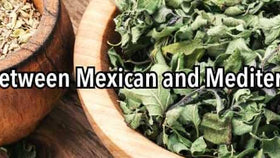What Is and What Isn't Ethical Saffron
Ethicality, it’s as important in the ingredients we us as it is our day-to-day life and the ways in which we treat one another. Unfortunately, as is the case with many ingredients, obtaining ethical saffron isn’t always as straightforward as it should be and the price of saffron has ultimately encouraged misrepresentation of other products and other unethical practices. This has never been more apparent then it has been in relatively recent years.
Saffron cultivation and harvesting is a lengthy and extremely involved process, which is the primary contributor to the high price tag ethically obtained, high-quality saffron fetches, but as of recent years, a decrease in availability have also entered the mix. Iran and Afghanistan are the largest producers of saffron, but sanctions imposed by the US and Europe on Iranian saffron have paved a road for even more questionable practices of obtainment.
Finding Ethical Saffron and Avoiding Fake Saffron
When it comes to the search for ethical saffron, one will likely come across a multitude of options. The first will be the tried and true stigma of the crocus sativus, which will come at a price reflective of the quality. When that quality is as it should be, with flavor and aroma attributes that are slightly sweet, earthy, and unlike any other spice on the planet, that price will be, pound-for-pound, more expensive than even gold.
The second option is a group of other ingredients that are what some people consider to be inexpensive substitutes for saffron. For spice novices, these ingredients are frequently confused with the real thing, due to similar names and color hues. A third possibility is also seen as bargain pricing, but it isn’t pure saffron but an imposter product being falsely marketed as saffron. There is a final incident of bargain pricing that one should also avoid—subpar saffron, but we will save that for another post.
As a consumer, it’s important to understand your options so you know what you are getting. Below, we will dig into ingredients being sold as saffron that are not sourced from the Crocus sativus..
Fake Saffron - Safflower
Safflower or Sáfrányos, a member of the thistle family, is sometimes mistaken for saffron but there are rare instances in which one should use the two ingredients interchangeably (and never if the goal is to impart that potent, irreplaceable saffron flavor). Quite often the mistaken identity is simply an innocent misguided purchase on the part of consumers who don’t have previous experience using real saffron.
To the inexperienced eye, the yellowish-orange hue of safflower may seem similar to what might be expected of saffron, but those who have used real, high-quality saffron know that real saffron is typically a deep red, with just slight amounts of orange or yellow—coloring brought about by a carotenoid compound known as crocin.
Fake Saffron - Marigold
“Georgian Saffron” is nearly flavorless, especially when compared to the potent foral/earthy bite that comes from the real thing. That said, a saffron novice could easily be fooled by the deep golden hue of Georgian “saffron”, because it does impart a similar color on dishes it is added to. However, this ingredient isn’t actually saffron at all. It’s the dried flowers of a marigold that have been ground into a fine powder.
Fake Saffron - Died Threads, Fibers, and Imposter Herbs and Spices
In most instances, both Georgian saffron and safflower petals are being marketed as completely different ingredients than saffron and not deceptively as actual saffron, but there are definitely instances when they are intentionally falsely represented.
There is another incident of fraudulent saffron that is indisputably intentional deception—selling died threads, fibers, and imposter ingredients as pure saffron and charging top dollar for them, as was the case with a Spanish gang that allegedly made millions selling a counterfeit product that only partially contained saffron and included chemicals and other inexpensive ingredients to increase the weight of the product being sold.
These are the reasons why it is so important to know what to look for when purchasing ingredients—what they look like, what they smell like, what they taste like, and where they come from. In our next post, we will explore the unique attributes of saffron so you don’t waste your money on an unethical or imposter product.







Slofoodgroup
Author